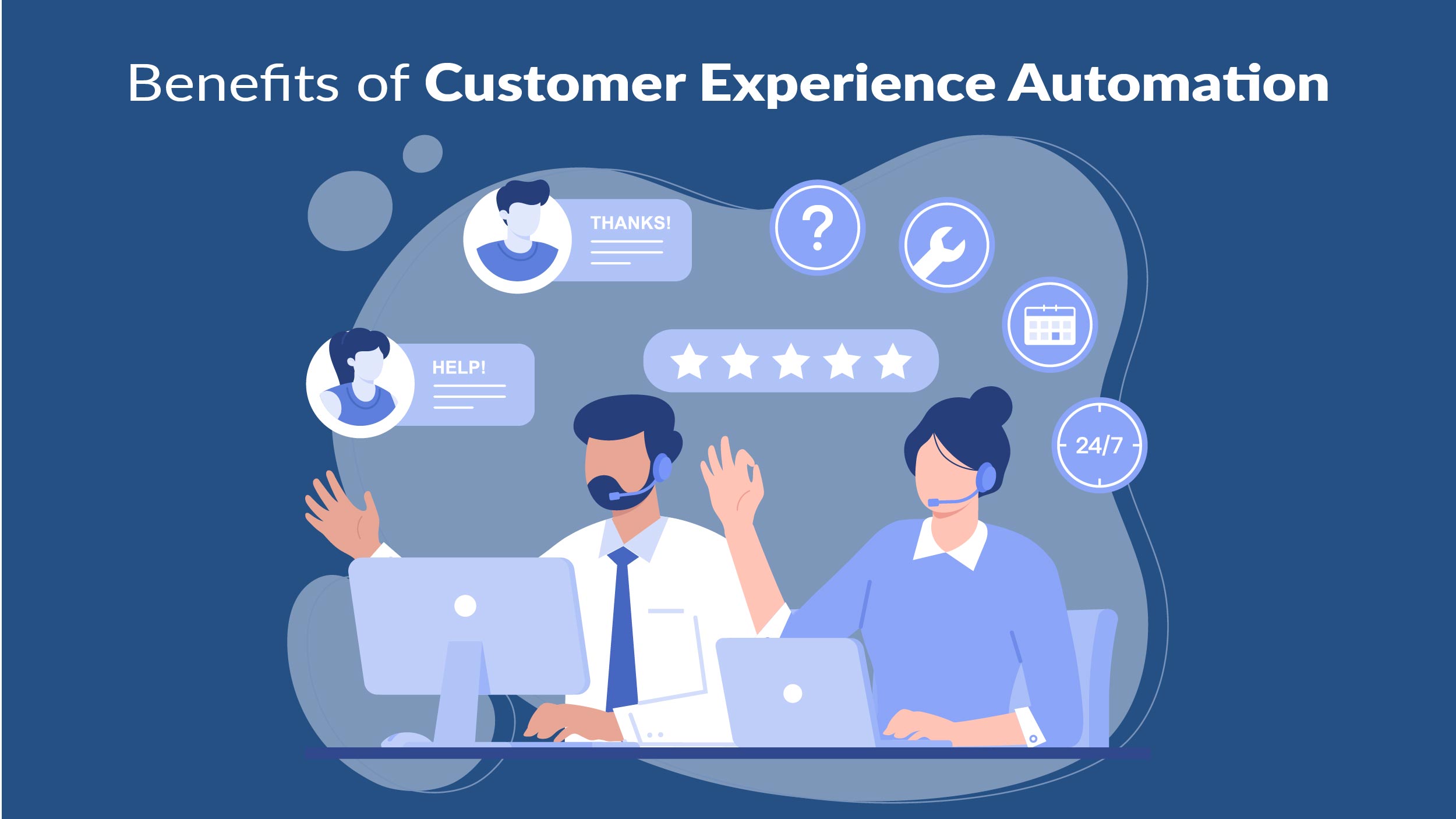Customers nowadays expect seamless and personalized experiences across all touchpoints with a brand. A staggering 86% of buyers are willing to pay more for a great customer experience. However, meeting these ever-rising expectations with manual processes alone is challenging for businesses.
This is why Customer Experience Automation (CXA) is crucial. Customer experience automation is the strategic application of artificial intelligence (AI), machine learning (ML), and automation to streamline and enhance customer interactions throughout the entire customer lifecycle.
This article discusses how CXA empowers businesses to deliver exceptional, contextualized experiences at scale while boosting operational efficiency.
What is Customer Experience Automation?
 Customer Experience Automation (CXA) is the process of employing technology and automation to enrich and customize the customer journey with a brand. It revolves around harnessing customer data and automating tasks to offer personalized interactions, enhance communication, and ensure a uniform experience across touchpoints.
Customer Experience Automation (CXA) is the process of employing technology and automation to enrich and customize the customer journey with a brand. It revolves around harnessing customer data and automating tasks to offer personalized interactions, enhance communication, and ensure a uniform experience across touchpoints.
Key Components of CXA
Effective CXA relies on four core elements:
- Orchestration: Leveraging customer data to identify areas where automation can drive maximum value and streamline touchpoints.
- Segmentation: Dividing the audience into granular segments based on shared traits like demographics, behaviors, and preferences for personalized engagement.
- Personalization: Crafting tailored interactions that make each customer feel valued and understood by tapping into segmentation insights.
- Automation: Deploying AI-powered technologies like chatbots, virtual assistants, and automated workflows to handle routine tasks and queries efficiently.
Also Read: The Essential Guide To Enhancing Your Digital Customer Experience (DCX)
Benefits of Customer Experience Automation
 24/7 Availability and Faster Response Times
24/7 Availability and Faster Response Times
With AI-driven chatbots and virtual assistants, businesses can provide round-the-clock support, addressing customer queries instantly without human intervention. According to Oracle, by 2023, 40% of customer interactions will be automated using AI and ML.
Improved Operational Efficiency and Cost Savings
By automating repetitive tasks and processes, CXA frees up valuable human resources to focus on more complex, strategic initiatives. This translates into significant cost savings and streamlined operations.
Hyper-Personalized Experiences
CXA leverages data-driven segmentation and personalization capabilities to tailor interactions based on individual customer preferences, behaviors, and context. 71% of customers expect personalized engagements, and CXA makes it possible to deliver at scale.
Elevated Customer Satisfaction and Loyalty
By providing prompt, personalized, and consistent experiences across all touchpoints, CXA directly impacts customer satisfaction and loyalty. Research by Harvard Business Review found that brands with high customer satisfaction scores enjoy significantly higher customer retention and repeat purchase rates.
7 Best Practices on Implementing Customer Experience Automation
Implementing automation across the entire customer journey requires careful planning and adherence to best practices. Here are some key strategies to consider:
- Comprehensive Data Integration: Centralized customer data from various sources to create a unified view of the customer journey. Ensure seamless integration between systems to capture and leverage data effectively.
- Mapping Customer Touch Points: Identify all touchpoints where customers interact with your brand, including website visits, social media engagements, and customer service interactions. Map out the customer journey to understand their experience at each stage.
- Automation Prioritization: Prioritize automation opportunities based on their impact on the customer experience and business objectives. Focus on automating repetitive tasks and processes that can be streamlined without sacrificing personalization.
- Personalization at Scale: Leverage automation tools to deliver personalized experiences at scale. Use customer data and behavioral insights to tailor communications, offers, and recommendations to individual preferences and needs.
- Cross-Channel Consistency: Ensure consistency across all customer touchpoints by integrating automation solutions seamlessly. Coordinate messaging and branding to provide a cohesive experience regardless of the channel or device used by the customer.
- Continuous Optimization: Regularly monitor and optimize automated processes to ensure they remain effective and relevant. Analyze customer feedback and performance metrics to identify areas for improvement and refinement.
- Human Touch Integration: While automation can streamline processes, ensure there are opportunities for human intervention when necessary. Maintain a balance between automated interactions and personalized, human-touch experiences to foster trust and engagement.
Example on How to Get Started with Customer Experience Automation
Embracing customer service automation can revolutionize how your organization interacts with customers, setting you apart from the competition.
One effective approach to marketing automation is utilizing AI-powered chatbots to address customer inquiries promptly. Rather than waiting on hold, customers can engage with chatbots for quick answers to common questions like “How do I contact sales?” By handling these routine queries, chatbots enable customers to swiftly progress through the buying cycle. This frees up your support team to focus on delivering personalized assistance for more complex issues, enhancing overall customer satisfaction.
An example of customer experience automation is voice assisted ordering option by Dominos. The pizza chain enables customers to place orders through voice assistants without needing to open the mobile app. This convenient feature helps customers order food quickly and effortlessly, saving them valuable time. Therefore, the utilization of voice assistants can also contribute to enhancing overall customer satisfaction.
Bottom Line
By embracing customer experience automation, businesses can deliver exceptional, personalized engagements while driving operational efficiency. The question is: Are businesses ready to use the transformative power of CXA and gain a lasting competitive edge?


Comments are closed.